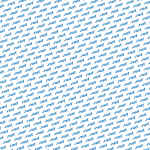Test spot of the surf team: Spot Guide Tobago - Caribbean windsurfing paradise with flat water and wave option
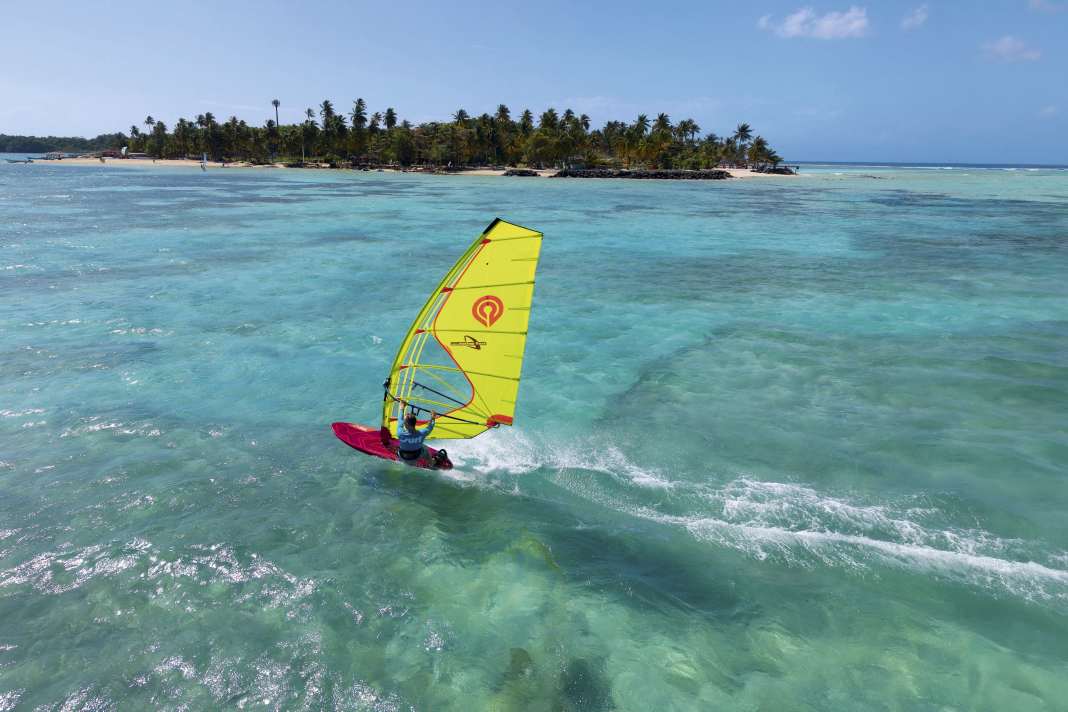





Arrive and switch off - when you land on Tobago, you immediately realise that the clocks tick slower here. The relaxed Caribbean lifestyle is infectious, and everything at Pigeon Point is designed to leave everyday life behind. After a flight of just under nine hours, you swap your winter clothes and boots for board shorts and flip-flops and find yourself at the compact Crown Point airport. From there, it's just a few minutes to the main spot, Pigeon Point. The nature reserve offers a postcard ambience - large palm groves, white beaches and a bay protected by an outer reef with unreal water colours. Stress? Not a chance. At most, there is stress on the last day within the test team, for example when the detailed shots of a test group are still missing and the plane is leaving for wintery Germany in three hours.
For the most part, Tobago still offers the Caribbean in its original state - very relaxed people, never hectic, chickens in the streets, no bed castles. The island has a chequered history and has changed hands at least 31 times since its discovery by Columbus. Sometimes it was the English, then the French, the Dutch and even Estonians. In between, the island has also been a pirate base from time to time, not least due to the changing balance of power.
For the most part, Tobago still offers the Caribbean in its original state.
Moderate, but diverse
And the test conditions on Tobago are just as varied. Even if these usually remain typically Caribbean moderate, freeride, freemove, foil and large wave or freewave boards can be used on Pigeon Point in a manageable space on one and the same day. The wind almost always blows suitably for sails between 5.8 and 8.0 square metres.
However, as the wave conditions on the outer reef are not constant enough and the time frame also plays a role in the test, we have mainly focussed on shallow water groups within the lagoon in the past. Depending on the wind strength and tide, the conditions there vary between mirror-smooth water and bump and jump conditions further out in the deeper part of the lagoon.
The wingfoil and windsurfing spots on Tobago
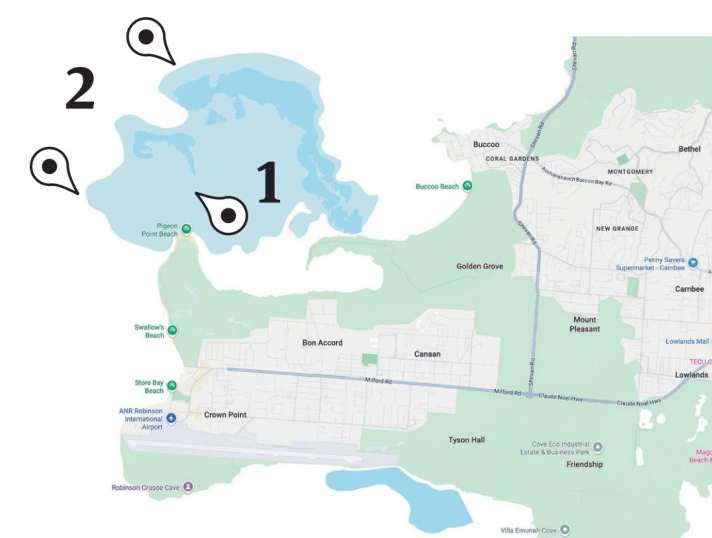
1. pigeon point/lagoon
11°10'26.5 "N 60°50'17.5 "W
The protected 2.5 x 1 kilometre lagoon at the Pigeon Point spot is located in the extreme south-west of Tobago, not far from the small town of Crown Point. The lagoon is shielded from the waves of the Atlantic by a reef belt, and even in strong winds there are no small chops that make life particularly difficult even for less experienced windsurfers. At low tide, the lagoon is generally better protected and shallower, and the water is correspondingly smoother than at high tide. The fact that large parts of the lagoon are shallow means that you can practise your manoeuvres very safely here. The spot itself fulfils all the Caribbean clichés - turquoise bathtub water, white sandy beach and palm trees swaying in the wind! On sunny days, the trade wind usually blows very steadily across the lagoon, and on cloudy days it can be a little gusty. The further you get from the shore, the lighter the wind often becomes. The ground in the water is mostly sandy, but there are also some sharp coral blocks - shoes are a good idea! The further you go from the beach to the left (western) part of the lagoon, the shallower it gets. Foilers therefore stay exclusively in the right-hand part. There is generally more than enough space - water sports enthusiasts don't really get in each other's way here.
2. pigeon point / outer reefs
11°10'35.6 "N 60°50'50.1 "W
The reef surrounding the lagoon sometimes breaks nice surf waves. In rare north winds, a nice surf wave breaks not far from Pigeon Point within sight of the palm beach, which also gives wave beginners a chance. With wind from the right, the waves can also be ridden frontside, waist to chest high is a common wave height here. Only when the swell really kicks in do big breakers run over the reef. In the surf zone, however, it is always deep enough to avoid landing on the reef.
With a normal trade wind from the east to north-east, it is also possible to set off from Pigeon Point on a half-wind course to the northern part of the outer reef. However, the wind decreases the further away from the shore you go - sufficiently large wave material is strongly recommended. A small channel leads through the reef into deep water. The wind then blows sideshore from the right, the wave usually reaches a height of one to two metres and is quite moderate. Nevertheless, you have to be aware that you are surfing virtually out of sight of the shore here; if the material breaks, you will inevitably head for Porlamar in Venezuela, around 400 kilometres away. You should therefore never make your way to this part of the reef alone and enquire about the conditions at the surf centre!
Spot Info Tobago
Wind, weather and neoprene
The best time for a trip to Tobago is between December and May, when the reliable trade wind blows from a north-easterly direction at over twelve knots on 60 to 75 per cent of days. As in many other spots in the Caribbean, the wind on Tobago tends to be moderate - 12 to 18 knots are the norm. However, days with >20 knots can also occur from time to time. When it's cloudy, the wind can be a little gusty, but otherwise it's wonderfully constant through the lagoon. With water temperatures of 27 degrees and air temperatures of around 30 degrees, you can safely leave a wetsuit at home and wear shorts and lycra, especially against the Caribbean sun. Shoes are recommended, as there are several coral reefs in the lagoon and the poisonous stingers of the occasional stonefish are no fun.
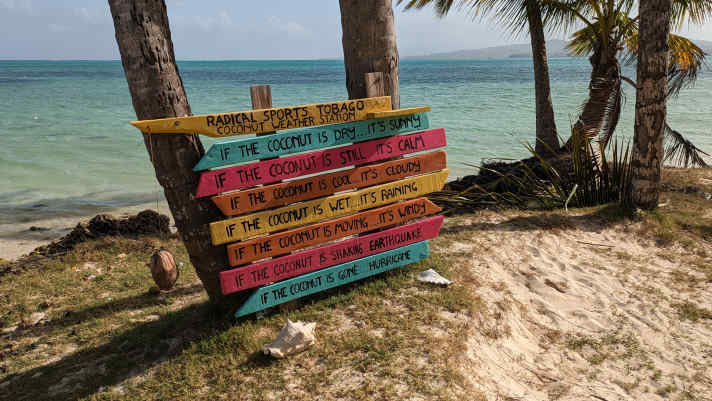
Waves and current
The large lagoon at Pigeon Point is surrounded by a reef belt and is therefore a very safe area. The currents are also kept within limits, on normal days the wind waves are at most knee-high. If the wind blows from the north, which is quite rare, you can enjoy beautiful surf waves on the western part of the outer reef. In the south-west, the island offers some top spots for surfers, for example Mt Irvine.
Surfstation
Radical Sports Tobago (radicalsportstobago.com) is the surf centre at Pigeon Point: very well maintained, and in addition to wind, kite and wing lessons, owner Brett and his crew offer a wide-ranging programme of activities - from yoga to one-wheel riding. In addition to equipment hire, you can also store your own equipment and airport transfers are also available. As a surf test team, we also always have our base here for equipment testing.
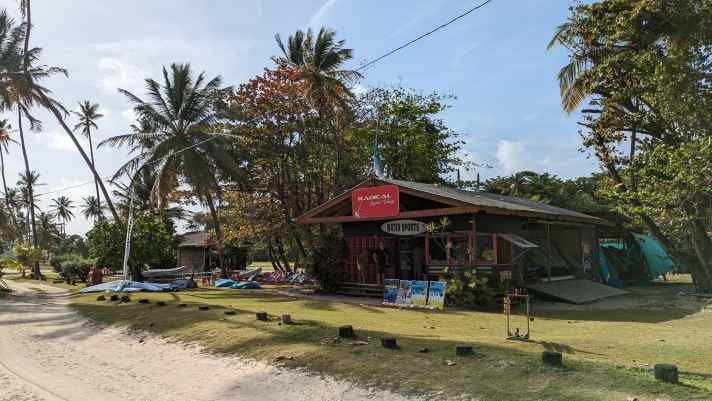
The Surf &Action Company is once again offering its Relax & Winter Escape Learnival at the centre from 24 February to 3 March 2026. In addition to a 3-4 hour water programme for every level, there is a varied Caribbean supporting programme. All information and prices for the event can be found at surf-action.com
Living
The area around the Pigeon Point surf spot is a nature reserve in which no hotels may be built. You therefore have to stay in the nearby village of Crown Point, with accommodation located between 25 and 40 minutes' walk from the spot. If the beautiful walk takes too long, you should hire a bike, which will take you to the spot in just under ten minutes. Crown Point has accommodation to suit almost every budget, from self-catering flats to all-inclusive hotels.
Good to know
A mosquito net and mosquito spray should be in your luggage! However, malaria prophylaxis is not necessary. Cuts and wounds heal very poorly in warm water and there is a risk of infection - a small first-aid kit won't do any harm. The national language on Tobago is English, the currency is the TTD (Trinidad and Tobago Dollar). In contrast to the main island of Trinidad, crime is hardly an issue, although you should be wary of pickpockets during the legendary carnival!
Alternative programme
A magical experience and highly recommended is a "bioluminescence tour" on one of the nights of the new moon! You paddle at night from the Radical Sports centre with kayaks or SUPs into the nearby lagoon, where the fluorescent plankton and the many animals in and above the water have a truly magical effect! Definitely worth a trip is a guided tour into the woods for birdwatching.
Castara/Englishman Bay is also interesting: there is a whole series of small bays on the island where the clocks run even slower and you get an idea of what the Caribbean must have looked like 100 years ago. Snorkelling and diving are also popular and, given the variety of fish and coral at the interface of the Atlantic and Caribbean, a real highlight on windless days.
